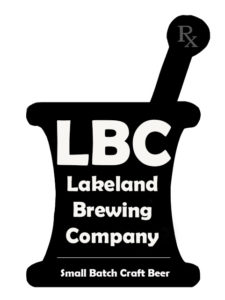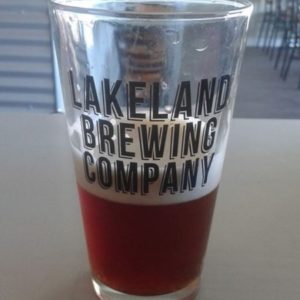 I have quickly gotten used to being surprised when I hear the location of a new brewery on the prairies. It seems it doesn’t matter how small or large the town, there is an opportunity to brew beer for the thirsty residents. And, encouragingly, those residents seem enthusiastic to embrace their local suds.
I have quickly gotten used to being surprised when I hear the location of a new brewery on the prairies. It seems it doesn’t matter how small or large the town, there is an opportunity to brew beer for the thirsty residents. And, encouragingly, those residents seem enthusiastic to embrace their local suds.
The latest in the parade of small town breweries is Lakeland Brewing, who officially opened in St. Paul two weeks ago. St. Paul is a town of 5,500 about 2 hours northeast of Edmonton. Until Lakeland launched, St. Paul was most famous for its UFO landing pad. Needless to say, it is the first brewery in the history of St. Paul.
Lakeland is the creation of Colin Porozni, a former pharmacist and pharmacy owner (as the logo makes obvious) and lifelong St. Paul resident. Porozni homebrewed in his younger days. Opening a brewery has been in the back of his mind for years. “I looked into it a few years ago but the prohibitive rules around production stopped me”, he says. “Once they dropped the [minimum production] rules I said lets do it. Time for a career change”.
Lakeland is intentionally designed to be small. “I see it being a local little brewpub. I have no intentions of distribution elsewhere”. His brewhouse is 3bbl with four 3bbl fermenters and four 6bbl serving tanks, with room in the cold room for four more. He says with a laugh he is already regretting “not going with a 7bbl system right away”.
The reason for small is that he wanted manageability and control. “I have worked 60 hours a week before. I didn’t want do to that again”. As he has already had a successful career, Porozni’s goals are modest. “If we can pay the bills and cover expenses, I will be happy”, adding jokingly that “I didn’t put a lot of thought into profitability”.
Porozni sells himself short with that comment. Once he decided to do it, he took online classes at Seibel and a short stint a UC-Davis to learn the science and technical aspects of brewing and then “kicked around” Portland for a while to learn more practical aspects of the business.
While he has a Class A license for the tap room (a full-service bar license), he plans a low-key affair. “We will have a limited menu, 16oz glasses and taster flights and the only offsales are growlers”. Although he says he did find room in the 75 seat space to “squeeze in two virtual golf screens”. He just wants to be a place where “people of area can come after work, socialize, have a beer and be on their way”.
He wants the beer to be just as “honest and simple. I want the beer to be easy drinking, traditional, no adjuncts, no additives but high quality”. He recognizes he is working with a smaller client base than the bigger cities in the province. “This is a small market. I see our operation as going back to old days in Europe where every town had its own brewery that brewed its own beer just for the town”.
 He plans on starting with four beer. The most accessible will be Frigid Gypsy Blonde. “We are in rural Alberta, and while I am finding there are more craft beer fans than I thought, I still think we should have a general easy beer”. The other beer include Jaybird Amber Ale, Honey Brown Ale and Power Failure IPA. The latter got its name because as he brewed it for the first time lightning hit a transformer near the brewery and “I was without power for three hours”.
He plans on starting with four beer. The most accessible will be Frigid Gypsy Blonde. “We are in rural Alberta, and while I am finding there are more craft beer fans than I thought, I still think we should have a general easy beer”. The other beer include Jaybird Amber Ale, Honey Brown Ale and Power Failure IPA. The latter got its name because as he brewed it for the first time lightning hit a transformer near the brewery and “I was without power for three hours”.
The original four may or may not be ongoing regulars. His hope is to have two or three of them on at all times complemented with two rotational taps. For the moment, the beer will only be available at the tap room with pints onsite or growler fills. Although Porozni doesn’t rule out packaging in cans in the future, if mobile canning becomes viable in the province.
The choice of name also reflects Porozni’s honest and simple approach. “St. Paul is the heart of the Lakeland District. There are 100 lakes within an hour of town.” He adds it was “a simple way to find a name”.
For now the only way to get Lakeland beer is to travel to St. Paul. However, that has the potential to mean that St. Paul will soon be more famous for its cool little brewery than it UFO landing pad.

Leave a Reply